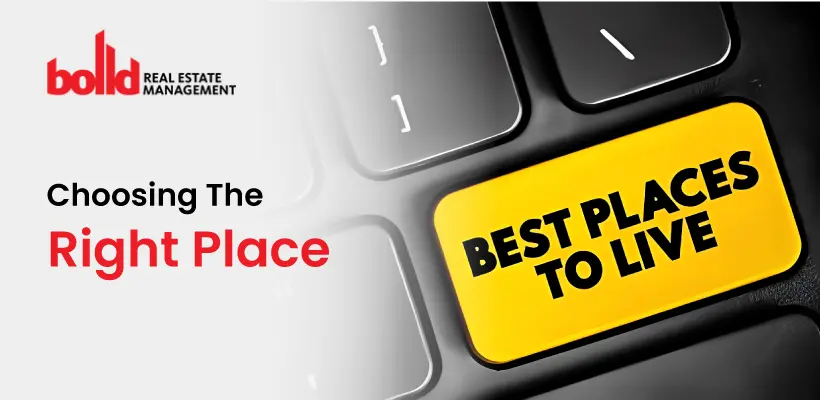Identify what your needs are:
How flexible are you about where you want to live? normally, your rental choices are restricted to whatever is available in that area and what is also affordable. There may be things you will have to compromise. Like, do you need to have public transit within a short walk of your new residence? as most renters, you’ll probably have to make a few compromises between what you want, what you need and what you can afford. Listing what your rental requirements are before you start a search can be helpful to narrow down your search.
Things to consider:
What is included in the rent?
Location of the property
Housing types
Cost.
What you can afford on rent depends on a number of reasons: Household income, outstanding debt, utilities and other living expenses.
The monthly rent is an obvious cost; However, it is important not to forget about the many less-visible costs that are in addition to your rent.
Are the utilities included in the rent or not? (heat, electricity, water, cable television and internet) the amount of the usage will vary from tenant to tenant therefore the costs will fluctuate.
Do you need parking? is that included in the rent, if not, how much will it be?
Will your monthly travel costs increase, decrease or remain about the same at this new location?
What appliances are included?
Is any form of provincial/territorial rent control in place? do you know what the landlord’s plans for future rent increases are?
How many bedrooms and bathrooms are there? Is there enough living space?
Location will often drive a rental search. Of course, prime locations cost more, but they often offer advantages, such as: Reduced commute time and expense, proximity to work and school. Safety and proximity to family and friends. Prepare a list of locations that best match your personal needs. Add secondary locations that you would also consider.
When looking for new rental accommodations, it is also important to evaluate the surrounding location as well as the building itself. Research the following:
Crime level in the area.
Distance to work and/or school, friends and family.
Access to public transit and major roads.
Traffic: Are the roads busy around the property? is there heavy traffic/ congestion at rush hour or seasonal times?
If you have children, are parks, play areas and schools nearby?
What are local amenities in the area? such as: Entertainment, recreation facilities, shopping, library, restaurants.
What is your impression of the general air quality?
How are the noise levels in the area at different times of day?
Housing types
Basement apartment
A basement apartment is a basement in a house that has been converted to an independent suite. It may have a separate entrance and may have its own bathroom, kitchen, laundry room and heating system. These may also be shared with the rest of the home
Detached
a detached house is not attached to any other building, but rather a completely separate and independent structure and is usually one or two stories in height. A detached house can also be referred to as a single-detached or a single family dwelling. A home which is only one-storey is called a bungalow, which comes in many different styles, for example, a ranch-style bungalow is a large, spread-out one-storey house.
Walk-up or low-rise apartment
a walk-up or low-rise apartment is a multi-unit residential building having only a few stories. Some do have an elevator, however, some do not have an elevator. Often times, monthly rent for a walk-up/ low rise apartment is less expensive than monthly rent for a high-rise apartment. These are usually older buildings consisting of less than five stories and can offer more privacy. They may have limited amenities, such as laundry rooms or storage lockers. Low-rise apartments often have an on-site building or residential manager.
High-rise apartment
a high-rise apartment is multi-unit residential building with many stories ranging anywhere from 6 to 30 or more stories high and made of concrete and or steel construction. They are usually located in the centre of the city. The lobby, elevators and hallways are common to all units, and often have security systems to monitor entry and exit to the building, also consisting of a concierge. Due to the size and complexity of these buildings, there is usually an on-site building manager to oversee the daily operations, as well as part or full time staff to clean and perform daily repairs and maintenance. High-rise buildings usually have efficient electrical, heating, sewage and plumbing systems.
Rooming house
a rooming house rents rooms on a weekly or the monthly basis. The room usually includes a refrigerator for food storage. Usually, roomers share the kitchen and bathroom(s). These are generally ideal for single person often used for temporary housing.
Semi-detached or duplex
a semi-detached house (or “Semi”) or duplex consists of two self-contained units built side by side or one above the other. The common wall is generally thick enough to prevent sound transfer between the two units. A duplex can be either one or two stories Tall and usually have backyards. If a yard is available, it is usually designated for the first-floor residents only.
Single-room occupancy
A single-room occupancy is similar to a rooming house, but includes a kitchen and a bathroom within each unit.
Townhouse or row house
townhouses, are self-contained units joined together at the sides. Each unit has separate entrances at the ground level. They are usually two storeys high.
[inf_infusionsoft_inline optin_id=optin_11]

